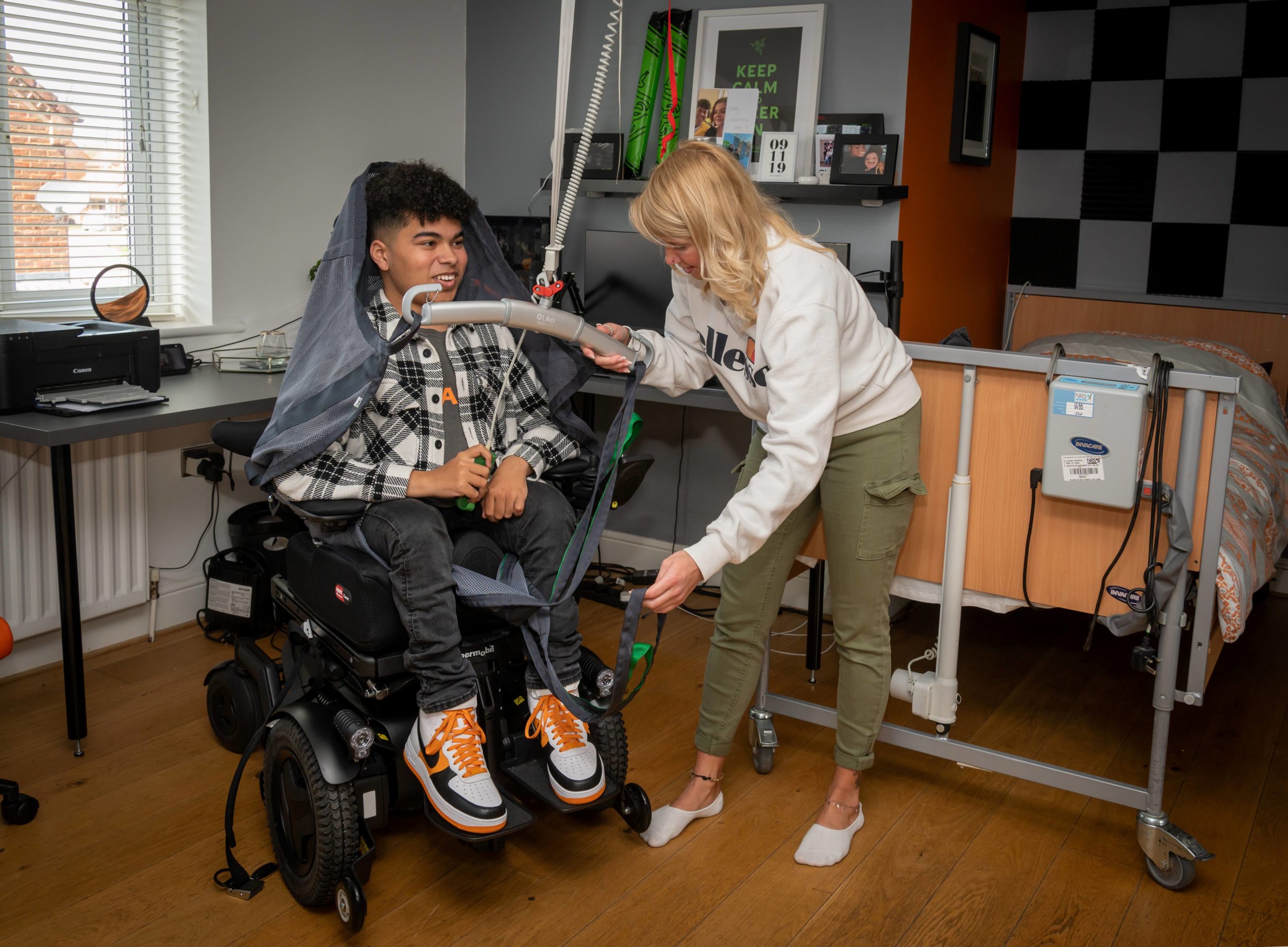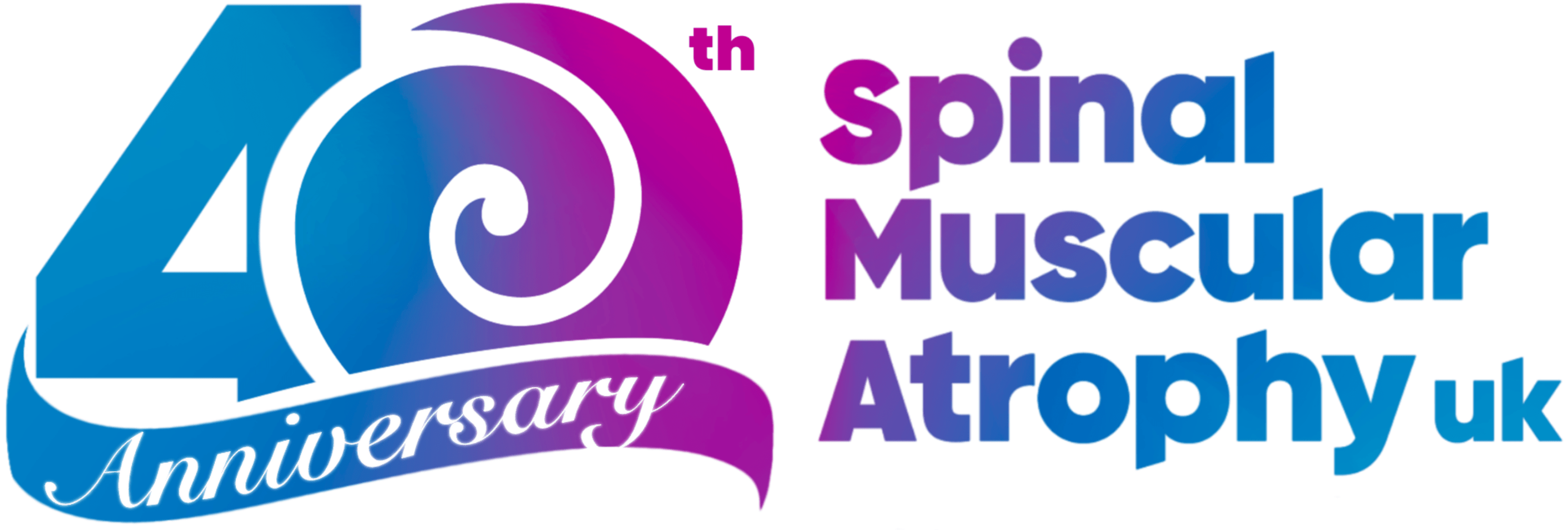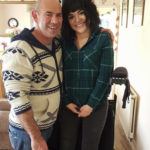Teenagers (13-17 years) Equipment

Teenagers (13-17 years) Equipment
Page last checked January 2025
Standing
If you are unable to walk, it is still important to maintain activities like supported standing for as long as possible. Standing is good for many things including:
- posture and range of motion
- preventing contractures
- breathing
- blood circulation
- bladder and bowels
- bones and joints.
Your physio or OT will provide equipment to support your standing and positioning. This may include a standing frame. They will tell you how often, when and where you should use any equipment.
Sitting
You should be seen by a specialist occupational therapist (OT) or physio if you cannot sit comfortably and safely because of your muscle weakness or any breathing difficulties. They should recommend comfortable seating for you. If you are not being seen regularly by an OT or physio, talk to your parents about contacting your GP or neuromuscular consultant. Ask for a referral to an OT or physio.
Funding
Your OT should supply some seating free via the NHS or the Local Authority. Usually they can only supply what is needed at your main home address. If your parents are separated or you spend a lot of time with grandparents or other relatives, it might be good to have more than one seating option. Your family will probably have to find the money for this.
If your family needs financial help to buy seating that cannot be provided by the NHS or Social Services, you may be eligible for our:
The Support Team > at SMA UK can also suggest other charities that may provide a grant.
For more information, see Tab 9. Funding For Equipment below.
If you are finding it hard to get out and about with your friends and family to do the things you enjoy, talk to your OT or physio. If you do not see one regularly, talk to your parents about contacting your GP or neuromuscular consultant. Explain what is going on and ask them for a referral so you can get advice.
This section looks at a variety of options, not all of which will be right for you. But, it will hopefully give you some ideas about what to think about.
The muscle weakness caused by your SMA may mean you need powered mobility equipment to get around. You may have had powerchairs before or this might be the first time. We hope these pages will help you get the chair that best suits you.
You may find that the muscle weakness caused by your SMA means the current set up you have in your bathroom no longer works for you. You may need some equipment to help.
Washing and Using the Loo
Let your occupational therapist (OT) know what the problems are. They will do their best to sort out equipment to make things as easy and stress-free as possible. If you don’t have an OT, your parents can contact your GP or neuromuscular consultant and ask for a referral. In many areas you can self refer to your local authority Occupational Therapy service for Equipment and Adaptations.
There is a wide variety of equipment and new products coming onto the market all the time. These include:
- Using the bath: bath chairs, lifts, cushions, inserts and portable baths
- Showering: multi-function shower and commode chairs, mobile and wall-mounted shower cradles and trolleys, shower chairs and stools
- Using the loo: toilet seats, cushions, frames and rails, urine deflectors, junior and travel urinals, wash and dry facilities.
Your OT should be able to advise what would work best for you. They should be able to provide most items of equipment and / or tell you how to get assistance to pay for them.
It may be helpful to have an idea of what is available for when you have any discussions with your OT or physio:
Living Made Easy > – choose the top tab: Health and personal care.
Also see: Tab 9. Funding For Equipment below.
Managing days out
Days out and travelling away from home can bring extra challenges.
Changing Places toilets > provide a height adjustable changing bench with a hoist and plenty of space. Visit their website for more information and a map > of where Changing Places can be found.
The National Key Scheme > for accessible toilets that can be found in shopping centres, cafes, department stores and in bus and train stations around the country. To unlock the toilets, you will need to buy a RADAR key >
Clothing
You may find that it helpful to have clothing that fits easily over your head, legs and arms. You may find it hard to get comfortable footwear. If you are a wheelchair user, you may want something that fits over both you and your wheelchair when you are going out.
Tips from our What’s App groups
Recommendations include:
- Able2Wear >
- Rackety’s > range sold by Fledglings Contact not for profit shop to support the charity
- Friendly Shoes >
- BILLY Footwear> range sold by Fledglings
If you are having difficulty keeping your feet warm, have a look at the shop at:
The muscle weakness caused by your SMA may mean that the bed you have now is no longer comfortable and safe for you. A different mattress or pillow may be more comfortable.
Some people find a sleep system which uses wedges and rolls to support the body is helpful. Your OT (occupational therapist) can advise you what is available and may work well for you. If you do not have an OT, your parents can ask your GP to make a referral or self- refer to your Local Authority Occupational Therapy service.
Some families find it useful to buy a portable electric pressure relieving mattress to take on holiday or for when you stay with friends or relatives.
Living Made Easy / Profiling Beds > are specialist ones you might discuss with your OT – you need to tick the boxes on the left hand side of the website page for what is appropriate for you.
If you need to be moved or turned at night to keep comfortable, having satin or
cotton ‘slide’ sheets on top of the mattress can make it easier for whoever is helping you. Alternatively, there are products available such as Wendylett sheets and other devices which can be attached to a hoist. These can assist in turning you safely and comfortably.
Funding
The NHS should fund a suitable bed and mattress for you at your main home address. If your parents are separated or you spend a lot of time with grandparents or other relatives it may not be possible for a second bed to be funded. It is also unlikely that a portable pressure relieving mattress would be funded, but it is worth your parents asking your OT.
If you do need additional sleeping options, your parents may want to apply for help to buy them. See: Tab 9. Funding For Equipment below.
Once you are taller and heavier, your parents and PAs (Personal Assistants) must avoid injuring their backs. They also need to lift you safely.
Your physio and OT can give advice on safe lifting and equipment that will help.
This includes smartphones and iPads or tablets. There may also be other Assistive Technology (AT) that you would find helpful. There is a huge range:
- Computer software and hardware, such as voice recognition programmes and screen readers.
- Adaptive switches for computer gaming
- Communication aids, for example, an ‘eye-tracking’ device to operate a computer
- Environmental control systems
For play and learning opportunities at home, you will usually need an assessment by a Specialist in Assistive Technology. Your OT or physio will be able to tell you about local services and potential funding.
If you need specialist computer access at school, this should be assessed through your Education, Health and Care Plan > and be provided through education services.
If an item cannot be funded by the health or local authority but your OT or other specialist can confirm you would benefit from having it, you may be able to get help with funding. See Tab 10. Funding for Equipment below.
In this video, Julian Fiorentini talks with Emma Vogelmann about getting his home set up and other useful tips:
Recorded December 2020
In the Community Voice ‘Useful Home Tech’, Julian talks about how readily-available, everyday technology can make a big difference and make life easier at home:
"Apart from a wheelchair, probably the thing I use the most around my house is my network of Intelligent Personal Assistants such as Amazon Alexa or Google Home devices." Julian[/highlighted]
Communication aids and environmental controls
-
Eye gaze
This is a way of accessing your computer or communication aid using a mouse. The system follows your eyes to see where you are looking on the screen. You can then select the item you are looking at by ‘dwelling’ or staring at the screen for a length of time, blinking or clicking with a switch.
Eye gaze systems work by having lights and cameras that are constantly sending and receiving information. The camera picks up light reflections from your pupils and translates the movement of your eyes into mouse cursor movements. They are ideal systems for anyone who has limited hand and arm movement and / or communication difficulties that make it difficult to operate a computer otherwise.
-
Environmental control systems (ECS)
These can be built into smartphones, laptops and wheelchair control pads including control of:
- lights
- heating
- electric profiling beds (if the existing controls are difficult to use)
- computers
- door openers
- telephones
- television
- radio.
Often an ECS can be controlled by only the smallest movement. It can also be set up for the person to call for help.
Your Local Authority and community OT can advise. They will usually involve an Electronic Assistive Technology (EAT) Service provider with in depth knowledge of latest developments and between them advise what funding might be available and how to apply. An ECS may be included in an application for a Disabled Facilities Grant. See Tab 8 on our Adults Home Page >
Muscular Dystrophy UK’s Adaptations Manual > looks at Environmental Controls in more depth
These links take you to a whole range of information and products:
- Abilia >
- ACE Centre >
- Communication Matters >
- Contact Charity’s shop Fledglings > Tech & Gaming – AAC Devices / Switches for all ages
- Eyegaze Systems (LC Technologies) >
- Inclusive Technology >
- Sensory Guru >
- Smartbox Assistive Technology >
- Tobii Dynavox >
Specialist computers and gaming equipment
- AbilityNet > – advice and training on computer technology for disabled people.
- Everyone Can > – provides information and support on all aspects of computing for disabled people.
- Special Effect > – adapted gaming controls.
The sections above mention a lot of the possible equipment to support you in your day-to-day life. Other items and accessories, sometimes small, can also make a difference. They can help you participate fully at home and school. For example:
- Automatic page turners, book holders and adapted pencil grips
- Ramps and grab bars
- Specialised handles and grips to help with eating and reaching
You can talk to your OT (occupational therapist) or physio about what help you need. They may be able to provide it. If you don’t have an OT or physio, ask your GP to make a referral for you. If you need something for a medical reason, the health authority should fund it. If you need equipment to help with personal care or daily living, your Local Authority should fund it via Social Services. Your OT should guide you.
These budgets are limited and may not cover every item that your OT suggests and there can be delays. Also, new products are coming on to the market all the time. If you want to see what the range is, and potentially buy anything yourself, do ‘try before you buy’.
You may find it helpful to visit one of the equipment exhibitions held around the country.
- Kidz to Adultz > exhibitions are held five times a year in the UK specifically for children and young people (aged up to 25 years).
If the health or local authority cannot fund an item, you may be able to get help with funding. Your OT or another professional must confirm you would benefit from it.
- See Tab 9. Funding for Equipment below.
Check Health Or Local Authority Funding
Buying used disability equipment
If the NHS or Social Services cannott provide you with an item, this can be a good way to save money and get the products you need for daily living.
- Scope gives a summary > of things to think about and where to look.
- Skiggle > a charity that provides a place for people to turn to if they urgently need a piece of equipment, feed, or disability care product.
Selling used disability equipment
If you have disability equipment that you no longer need, you may be able to sell it.
- Scope gives a summary > of suggestions for how to go about it.
Donating and recycling used disability equipment
There are several charities that accept donations of used disability equipment.
- Scope gives a number of suggestions >.
- Skiggle > charity that runs an online marketplace where people can safely give away and distribute disability care products and equipment
If you are keen to try to pass on your equipment to other people affected by SMA, it might be worth checking if this is possible through one of the SMA online communities >.
Equipz > – Disabled Living’s services which relate to the provision of information and advice about equipment and services.
Naidex > – Europe’s most established event for supporting independent living, showcasing wide-ranging solutions to improve mobility and accessibility, the latest innovations and tech. It explores the future of digital and physical accessibility. The event is for anyone who is living with a health condition or impairment, as well as anyone caring for or supplying equipment and services to the community. Their event features suppliers, seminars and panels, and a host of interactive features.
Kidz to Adultz exhibitions > – Organised by Disabled Living, these are five of the largest, free UK exhibitions dedicated to children and young adults aged up to 25 years with disabilities and additional needs, their parents, carers and professionals who work with them.
If you:
- would like a printed copy of this information
- have questions we haven’t answered
- need support

 The way I fundraised was by simply being persistent – I arranged quiz nights, raffle nights, pub nights…you name it I did it!" Jasmine
The way I fundraised was by simply being persistent – I arranged quiz nights, raffle nights, pub nights…you name it I did it!" Jasmine